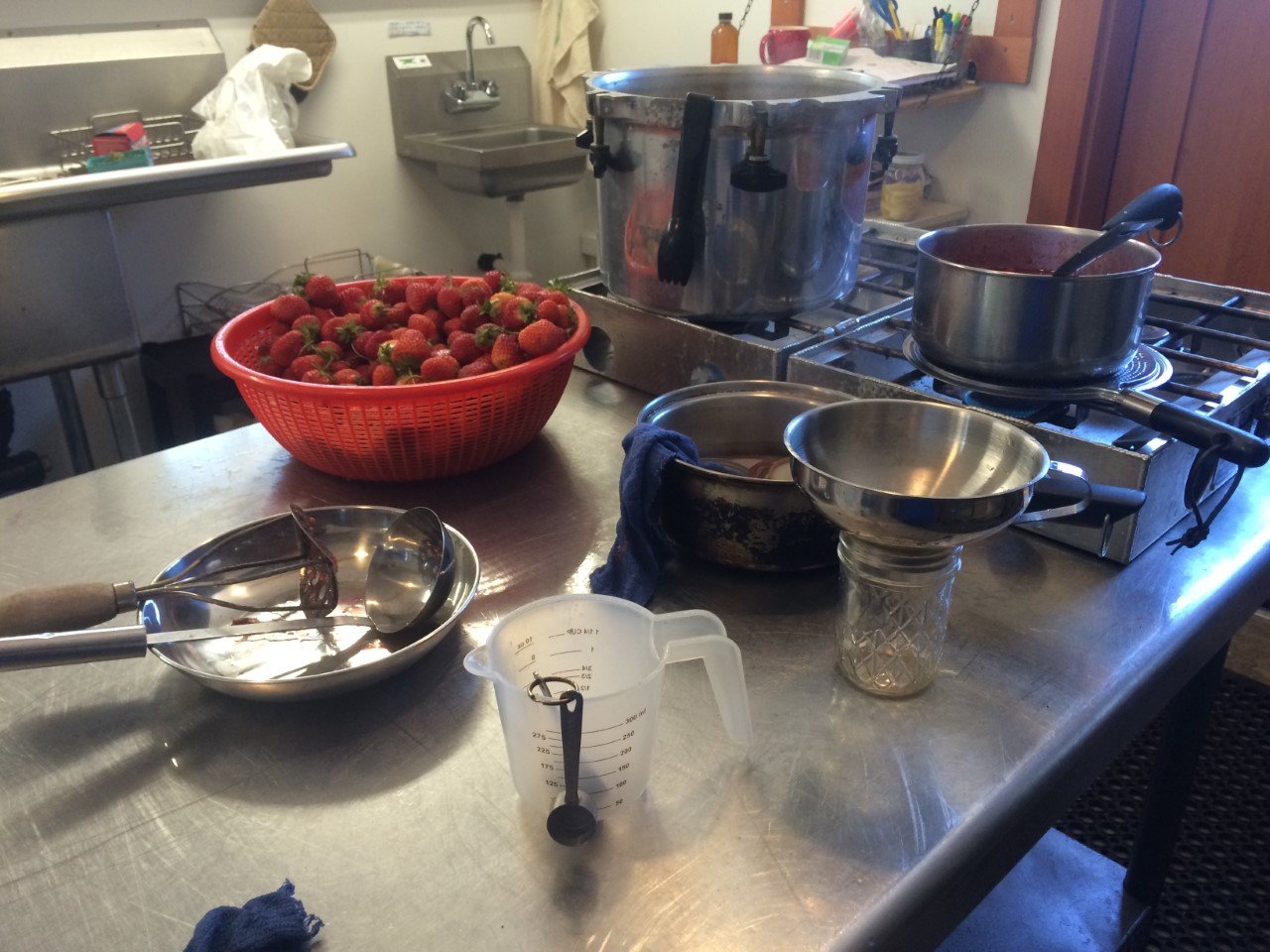
On the Olympic Peninsula, the fruitfulness of September is also a harbinger of winter. Fortunately, Washington State University Extension offers professional food preservation guidance to help you capture our locally grown summer delights for our darker months!
History of food preservation
Food preservation is the act of processing food to slow or stop microbial activity that causes spoilage. These processes may involve heating, cooling, or removing moisture and oxygen. Some methods, like fermentation, involve fostering environments within the food that are inhospitable to harmful bacteria and support the growth of beneficial bacteria, which in turn create preservative acids.
Burying, drying, smoking, and fermentation are the earliest known food preservation methods. Dried and fermented foods provide flavor depth and complexity that cannot be achieved in their fresh forms. The early Pawnee and Wichita people of Kansas wove sun-dried pumpkin strips into mats to be used throughout the winter. Ancient Romans often incorporated dried herbs and fruits into their complex sauces and marinades. Fermentation has been practiced since 10,000 BCE when humans were sedentary enough to let grain sit in water and watch what happened (Hint: beer is what happened). Like with many food preservation methods, fermentation requires few ingredients and yields a shelf-stable and more nutritious product. Having understood its preservative qualities, ancient Romans preserved foods directly in alcohol before the use of brines and vinegar were more widely adopted.
Both sugar and salt are common ingredients in preserved foods because they absorb and reduce the activity of water at the cellular level, which weakens some microbes. Historically, the main reason for adding salt to food was for preservation. While advances in refrigeration and food processing have eliminated this need, it is still a critical ingredient in meat curing as well as lactic acid fermentation of sauerkraut and pickles, just as sugar is key to most jam recipes.
Canning was not introduced as a food preservation method until the turn of the 19th century when vacuum bottling and tin canning were developed in France for military needs. However, it was not until 1864—when Louis Pasteur discovered the relationship between microorganisms, food spoilage, and illness—that heating and removing air in canning were widely understood as effective methods to eradicate the pathogens that cause foodborne illness.
Preserve food safely this season
Traditional food preservation knowledge has been refined over generations, for centuries, and is bound to cultural practices of cultivating, eating, and sharing food. In 1946, however, in part due to an uptick in reported cases of illness and death related to foodborne pathogens, the USDA issued its first technical recommendation on home preservation with the goal of preventing foodborne illness from eating improperly canned foods.
While there have been relatively few reported cases of harmful foodborne pathogens such as salmonella, listeria, or botulism toxin, following a USDA-tested food preservation recipe is the most surefire way to prevent illness. WSU Clallam and Jefferson Extension offer both free and low-cost, USDA-tested and researched canning and food preservation education.
How food preservation knowledge helps us eat local
Choosing local and seasonal food is choosing nutrition, flavor, and a healthy local food economy. When perusing the farmers’ market, opening your CSA box, or browsing your favorite farmers’ social media posts, look for summer vegetables that ripen abundantly but are short-lived, such as tomatoes, peppers, cucumbers, zucchini, and green beans. Deviate from the common pickle with a relish or chow-chow.
Root vegetables such as carrots, daikon radishes, hakurei turnips, and beets, can be dried into chips or enjoyed pickled or fermented. Other hardy veggies such as cauliflower make a fantastic pickle and freeze quite well when riced.
Pears, apples, stone fruit, and those blackberries from your secret spot can be preserved in numerous ways, from butters to jams, pie fillings, slices, and chutneys.
Onions, shallots, scallions, leeks, and garlic are a flavorful addition to many a pickle or ferment. Experiment with adding sweet, savory, and spicy flavors such as ginger, sage, cardamom, or chili pepper. If your local farmer is selling fresh dill heads or coriander, grab them while you can!
Food preservation is a massive topic, so WSU Extension recommends using tested recipes and asking plenty of questions. When considering preserving food at home, start with the following considerations:
Community Health Program Coordinator Danielle Carson is the certified consumer food safety and preservation advisor for Clallam and Jefferson Counties. She is based in Port Angeles and can be reached at danielle.carson@wsu.edu.
Visit https://extension.wsu.edu/foodsafety/ for up-to-date resources on preserving food at home.
References
Information and research used in the article came from Washington State University Extension (2015), The National Center for Home Food Preservation (2002), University of Georgia Cooperative Extension (2018), Kansas State Historical Society (1996), the National Institutes of Health (2010), Indian Agriculture Research Institute (2007), and Mother Earth News (2021).